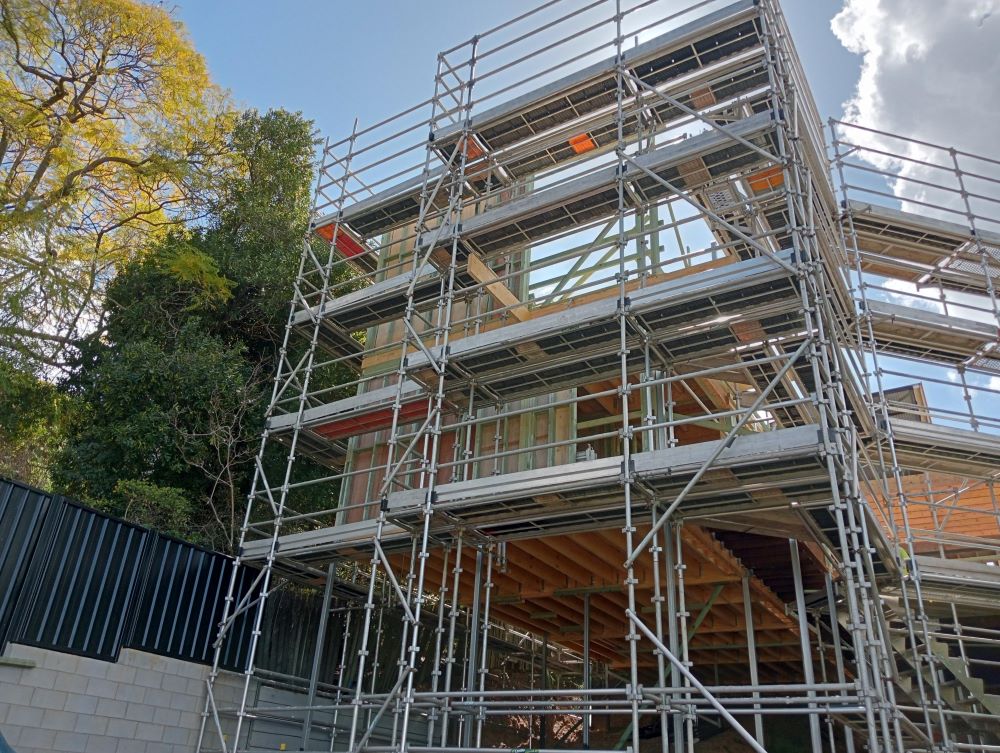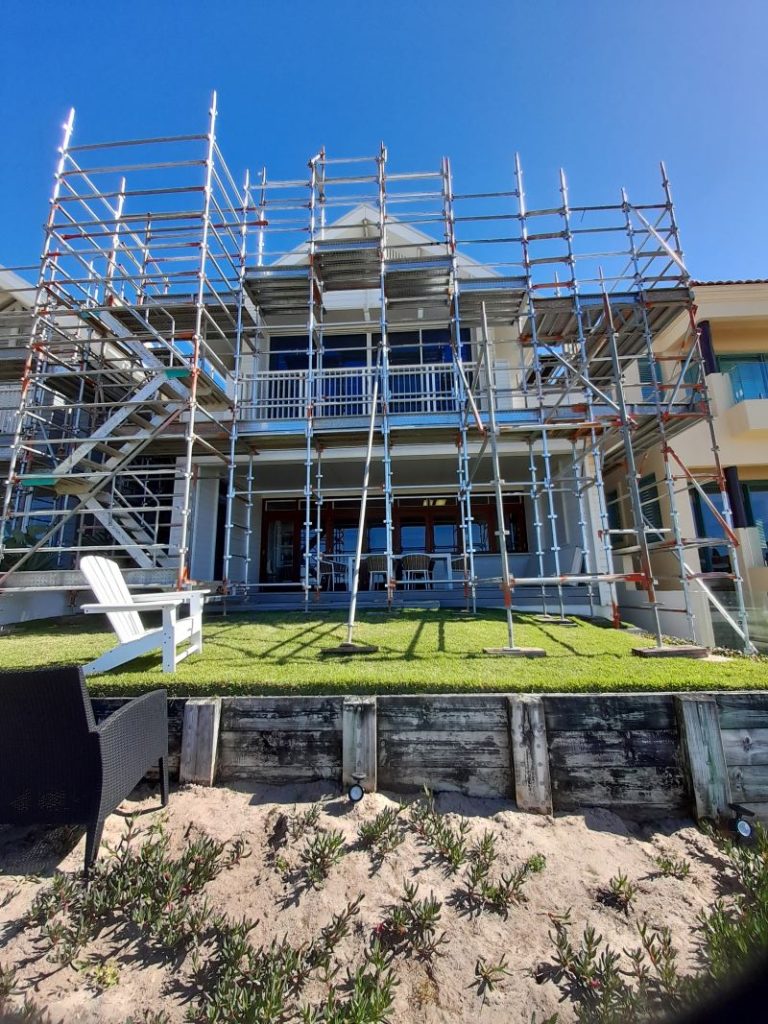Comprehensive Analysis of Aluminium and Steel Scaffolding for Optimal Construction Results
Choosing the right scaffold material for your construction or renovation project is vital to ensure both safety and operational efficiency. Among the most favored materials are aluminium scaffolding and steel scaffolding. Each option has distinct characteristics and advantages, making them suitable for various project requirements. This detailed guide aims to provide an exhaustive comparison of these two popular scaffolding materials, highlighting their features, benefits, and ideal applications to assist you in selecting the most appropriate scaffold for your specific project needs.
When evaluating scaffold options, it's essential to understand the unique benefits that aluminium and steel scaffolding offer. We will delve deep into these characteristics to empower you with the knowledge necessary to make a well-informed decision tailored to your project’s specific demands and conditions.

Maximize Efficiency: Key Benefits of Aluminium Scaffolding for Your Construction Projects
Aluminium scaffolding is widely recognized for its lightweight design and remarkable ease of handling, making it the ideal choice for projects that require quick assembly and frequent relocation. The components of aluminium scaffolding are significantly lighter compared to those made from steel, which enhances both transportation and manoeuvrability at the job site. This is particularly advantageous for contractors working in tight spaces or those needing to reposition scaffolding materials regularly, ensuring a seamless workflow and heightened efficiency during construction operations.
Moreover, aluminium scaffolding boasts an impressive corrosion resistance that makes it a fantastic option for outdoor projects or areas with high humidity. This property safeguards the scaffolding, allowing it to retain its structural integrity and appearance over time. The corrosion-resistant nature of aluminium scaffolding significantly contributes to its long-term reliability and performance, which is crucial for projects exposed to harsh weather conditions or moisture. This ensures safety and durability, reducing maintenance needs over time.
Setting up and dismantling aluminium scaffolds is generally quick and straightforward, as the components are specifically designed for easy assembly and disassembly. This efficiency translates into substantial time savings on-site, especially for projects with tight deadlines. By minimizing setup time, construction teams can dedicate more effort to completing their tasks effectively and safely, thereby enhancing overall productivity and reducing project timelines.
Unveil the Strength and Stability of Steel Scaffolding for Your Construction Needs
Steel scaffolding is highly regarded for its superior strength and outstanding load-bearing capacity, making it a remarkably durable option for construction projects that require substantial support. This material is meticulously engineered to support significant weight and withstand challenging conditions, providing a stable platform for workers, even in high-demand environments. Its rigidity and overall strength make it especially suitable for projects involving heavy machinery or substantial materials, ensuring a safe and reliable working environment at elevated heights.
The durability of steel scaffolding is a considerable advantage, particularly in extreme weather conditions or high-traffic areas where the scaffold may experience significant usage. Unlike lighter materials, steel scaffolding is crafted to resist bending or deformation, ensuring a secure working environment for personnel. This reliability instills confidence and a sense of safety among construction teams, allowing them to work without concern for equipment integrity.
Additionally, steel scaffolding is known for its cost-effective longevity. While the initial investment may be higher than aluminium, the exceptional durability and extended lifespan of steel scaffolding make it a financially sound choice over time. Its ability to endure repeated use results in fewer replacement or maintenance needs, thus providing significant cost savings in the long run, making it an attractive option for budget-conscious projects.
When determining the appropriate choice between aluminium and steel scaffolding, it is essential to consider the specific requirements of your project. Factors such as material weight, scaffold height and size, as well as environmental conditions at the job site, will greatly influence your final decision.
Consulting with your scaffold hire company can offer valuable insights, assisting you in selecting the most suitable option for your project’s unique demands. For additional information on when scaffolding is necessary and the types of projects that may require it, be sure to read our article on when to hire scaffolding.
Essential Factors to Consider When Choosing Scaffolding Material
Several critical factors must be deliberated when evaluating the choice between aluminium and steel scaffolding. A thorough understanding of each material's strength and durability, weight and portability, and cost and affordability will empower you to make a well-informed choice that aligns with your project's specific requirements and constraints.
Evaluating the Strength and Durability of Aluminium and Steel Scaffolding
Both aluminium and steel scaffolding are recognized for their strength and durability. However, they exhibit distinct qualities that may influence your selection. Steel scaffolding is generally considered to have superior strength and load-bearing capacity compared to aluminium scaffolding. The robust composition of steel allows it to support heavy loads and maintain stability in challenging construction scenarios, making it the preferred choice for demanding projects.
Conversely, while aluminium scaffolds are indeed strong and durable, they may not support exceptionally heavy loads as effectively as steel. Therefore, it is crucial to assess your project’s weight requirements thoroughly to determine which scaffold material best meets your operational needs and safety standards, ensuring a secure environment for all personnel involved.
Understanding Weight and Portability of Different Scaffolding Options
Aluminium scaffolds hold a significant advantage in terms of weight and portability. Their lightweight nature facilitates easier handling and transportation when compared to their heavier steel counterparts. This characteristic proves particularly beneficial in smaller-scale projects or environments where scaffolding requires frequent repositioning, as it reduces the physical strain on workers and enhances overall job site productivity.
While steel scaffolds may be heavier, they still offer a degree of portability; however, they generally require more effort and manpower for transportation. Understanding the relevant weight and portability aspects of your project is essential to ensure efficient and safe scaffold use, ultimately leading to improved job site dynamics and worker satisfaction.
Uncover the Unique Benefits of Aluminium Scaffolding for Your Projects
After evaluating various scaffold materials, aluminium scaffolding reveals a range of distinctive advantages that make it a preferred choice for numerous construction and renovation endeavors.
The Lightweight Advantage of Aluminium Scaffolding for Effortless Operation
A prominent advantage of aluminium scaffolding is its lightweight design. In comparison to steel scaffolding, aluminium is significantly lighter, enhancing its manageability and transportability. This feature not only accelerates the assembly and disassembly processes but also contributes to a more efficient workflow, ultimately shortening the overall project timeline. Furthermore, the ease of handling greatly boosts worker productivity, reducing the risk of fatigue-related accidents and enhancing overall safety on-site, proving invaluable for successful project execution.
Outstanding Corrosion Resistance for Sustainable Use
Aluminium scaffolding showcases exceptional corrosion resistance, making it an excellent choice for a variety of environmental conditions. Unlike steel, which is prone to rust and deterioration, aluminium's natural resistance to corrosion ensures it maintains its structural integrity even when exposed to moisture or outdoor elements. This quality is particularly beneficial for projects conducted in damp or humid conditions, ensuring that the scaffold remains safe, reliable, and effective throughout its usage, thus minimizing maintenance and replacement costs.
Efficiency Through Quick Assembly and Disassembly of Aluminium Scaffolding
Another crucial benefit of aluminium scaffolding is its quick assembly and disassembly capabilities. The lightweight components, user-friendly connectors, and locking mechanisms facilitate a streamlined setup process. This efficiency is especially valuable in time-sensitive projects or when scaffolding needs frequent relocation. The rapid assembly and disassembly associated with aluminium scaffolding not only saves time but also helps reduce overall labour costs, providing an economic advantage for project managers aiming to optimize resources effectively and enhance productivity.

Explore the Unmatched Strength and Durability of Steel Scaffolding
Steel scaffolding offers a multitude of benefits that establish it as a top choice among contractors and builders when selecting the most suitable scaffold for construction projects.
Discover the Unrivaled Strength and Load Capacity of Steel Scaffolding
One of the primary advantages of steel scaffolding is its unparalleled strength and load capacity. Steel is renowned for its exceptional durability and ability to support substantial weights, making it ideal for projects that require scaffolding to bear significant loads. Steel scaffold systems are meticulously designed to provide workers with a stable and secure platform, ensuring their safety while operating at elevated heights and in demanding environments, thus promoting an efficient work atmosphere.
Unmatched Durability Against Extreme Environmental Elements
Steel scaffolding is engineered to withstand a variety of environmental factors, making it suitable for harsh conditions. It can endure adverse weather elements, including high winds, heavy rain, and extreme temperature fluctuations. This robust durability guarantees that the scaffold remains stable and secure, establishing a safe working environment for construction teams. Whether undertaking projects such as gutter replacements or other tasks necessitating scaffolding in challenging conditions, steel scaffolding is built to endure the rigors of the job, providing peace of mind to workers.
Understand the Financial Benefits of Steel Scaffolding’s Longevity
Steel scaffolding is widely acknowledged for its impressive longevity and overall cost-effectiveness. Its inherent durability ensures that the scaffold can endure numerous construction projects over extended durations. Unlike other materials, steel scaffolding resists quick degradation, leading to a reduced need for frequent replacements or repairs.
To identify the most suitable scaffold material for your specific project, it is essential to carefully assess your needs, consult with industry professionals, and consider safety standards alongside budget constraints.
Strategic Steps to Choose the Ideal Scaffold for Your Construction Project
Selecting the right scaffold for your project requires a meticulous assessment of your unique requirements. By thoroughly evaluating your project specifications, consulting with professionals, and considering safety and budget constraints, you can make a well-informed decision that aligns with your operational goals and enhances project efficiency.
Thoroughly Evaluate Your Project Specifications for Optimal Scaffold Selection
Begin by evaluating the specific details of your project and the tasks that necessitate scaffold support. Key considerations include the height and configuration of the structure, the expected duration of the project, and any specialized requirements that may arise.
For instance, scaffolding for an apartment complex will have distinct specifications compared to scaffolding or guard rails for gutter replacement projects. By gaining a comprehensive understanding of your project needs, you can determine the appropriate type and configuration of scaffold that will best suit your operational objectives, ensuring both on-site safety and efficiency.
The Crucial Role of Professional Consultation in Scaffold Selection
Engaging with experts, such as Cando Scaffolding, is highly recommended when navigating the complexities of scaffold selection. Our extensive industry experience ensures you receive invaluable guidance, assisting you in meeting safety standards and regulatory requirements throughout your project.
Contact us today or request a quote to initiate the process of selecting the ideal scaffold tailored to your project needs.
The post-Scaffold Choices: Aluminium vs Steel for Your Project appeared first on https://writebuff.com/.
The Article Aluminium vs. Steel: Choosing the Best Scaffold for Your Project Was Found On https://limitsofstrategy.com
Comments are closed